SAME OBJECT, DIFFERENT MATERIALS: JONATHAN MUECKE ON HIS SCULPTURAL DESIGN OBJECTS
by Emmanuel Olunkwa
Install view of Jonathan Muecke: Objects in Sculpture at the Art Institute of Chicago, which is on view until October 10, 2022. Courtesy The Art Institute of Chicago, 2022.
Designer Jonathan Muecke thinks he is in the practice of making the same thing over and over again. It’s not true, of course, but his liminal objects — arcing textile sculptures that have no fixed function, chairs made from braided carbon tubes, a rock with holes — are unified by their oblique simplicity. Wyoming-born Muecke studied architecture at Iowa State University, interned at Herzog & de Meuron in Basel, Switzerland, and studied 3D design at the Cranbrook Academy of Art before establishing his own office in 2010. Most of his abstracted pieces are made entirely from one material, be it aluminum, carbon fiber, or stainless steel, and they’ve inspired a group of hyper-specific devotees. The 39-year-old currently shows with Maniera in Brussels and Volume Gallery in Chicago, not too far from the Art Institute of Chicago, which is currently staging his first major museum show until October 10, 2022. The exhibition consists of a selection of works that Muecke calls “open objects,” which investigate color’s shape, texture’s scale and the possibility of eliminating surfaces entirely.
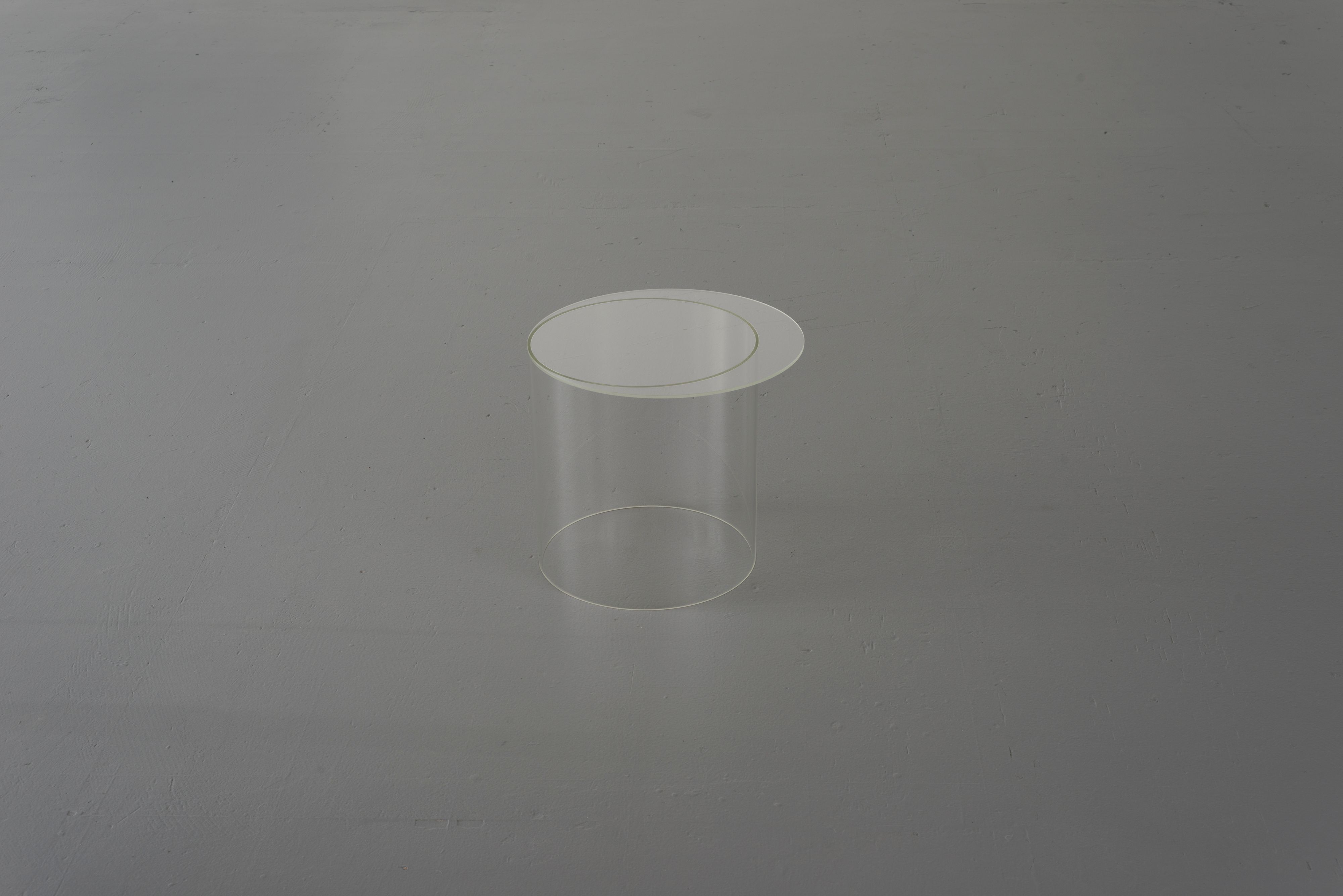
Jonathan Muecke GT (Glass Table), 2016. Made from glass. Photo courtesy of the artist and Volume Gallery.
Emmanuel Olunkwa: You make most of your pieces in one single material — a shelf entirely in aluminum, a table only in carbon fiber, etc. Is that constraint related to the appeal of each different material you use?
Jonathan Muecke: It’s somewhat of an unknown. Saying that something is made of one material simplifies everything greatly for me. It makes it more difficult in a lot of ways, but it also simplifies the object inherently, and gives you more freedom to develop and enhance other aspects of design through the making process. In terms of engaging shape or scale, I’m not stuck with worrying or developing a relationship to preference, tone, or style.
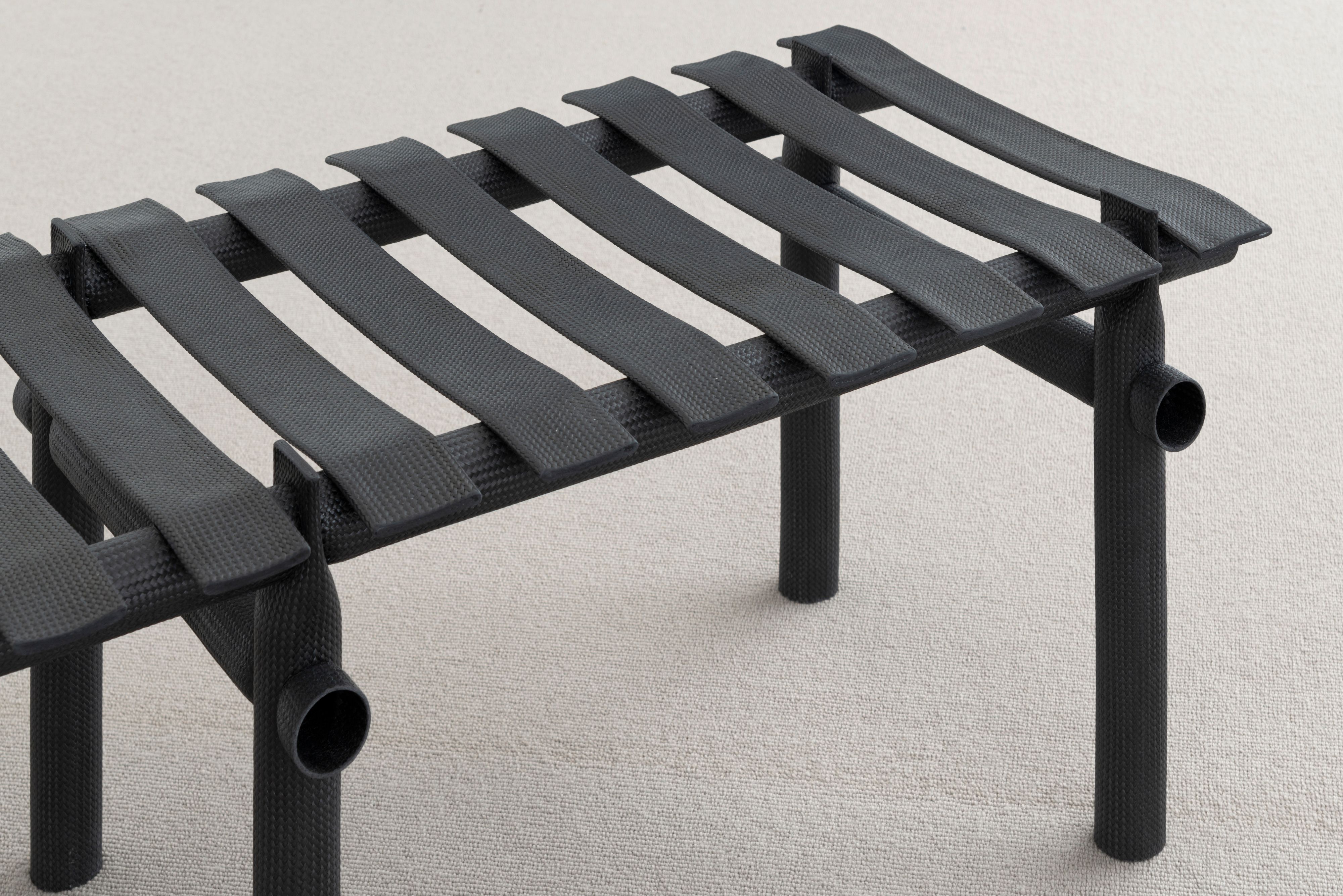
Detail of Jonathan Muecke CTB (Carbon Tube Bench), 2021. Made from carbon fiber. Photo courtesy of the artist and Volume Gallery.
When do you encounter the object? In your mind’s eye or after it’s made and placed in a space?
Somewhere in the middle. There’s always an enormous amount of trial and error — it’s like an empirical process where you have a material that you have some suspicion of, or you recognize something about, and then you work on it and test it in different ways long before there’s ever an object intended for that material. On the other hand, the process never determines the object. The object is always considered somewhere in the middle — it’s not “Let’s see what happens and the outcome is the outcome.” It’s much more precise than that.
What’s your relationship to design?
[Laughs.] I kind of wonder about that sometimes. Design for me is like a service, though I don't think of myself in those terms. In a way, service is another way you could describe architecture. But that’s not how I approach making. A lot of the things I make are self-initiated. I’ve never had the desire to make things specifically for myself either. It’s not a service for someone else, but it’s also not made for me, so having the object exist in that in-between space is the most interesting place for me. I think of design as a way of practicing much more than I do about the terms or the concepts that design uses.
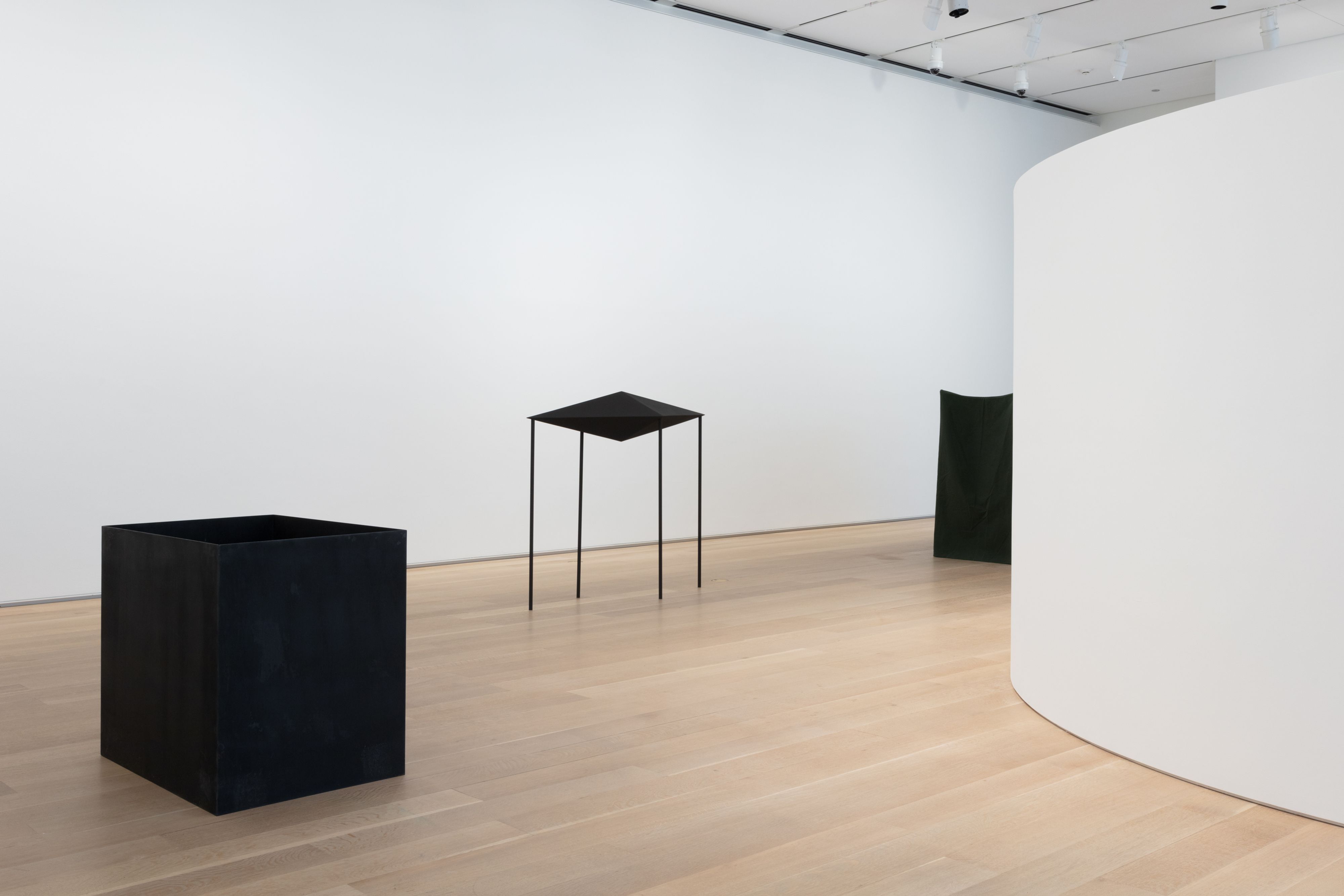
Install view of Jonathan Muecke: Objects in Sculpture at the Art Institute of Chicago, which is on view until October 10, 2022. Courtesy The Art Institute of Chicago, 2022.
Are you surprised by any of what you’re doing — how you work with materials and think across architecture and industrial design?
No, not surprised, but it’s hard for me to recognize how things move straight forward.
Why did you go to Cranbrook Academy of Art?
I went to Cranbrook in a way to pay for a studio in the [Eliel] Saarinen building. I wasn’t interested in going to school for a Master of Architecture and being told what someone else thought about my work. Cranbrook has always been an atypical institution in that it’s driven by peer review and not by instructors.
If you don’t design things for yourself, what kind of objects do you live with?
I live with my family. I have three young kids and we have collections of things we were given and things we’ve found. I would say it's no different than how most other people live.

Jonathan Muecke AMS (Aluminum Modular Shelf), 2018. Made from aluminum and fabric. Photo courtesy of the artist and Volume Gallery.
Are the things you own collector’s items, or are they more practical and utilitarian?
I would say more practical and utilitarian. There are always a few things of mine in the house, almost just as tests, things that aren’t of particular scales. But no, there are no chairs of mine, though there is a lamp of mine. My kids know that I bring things in and out of the house on a regular basis. They are the first to live with them, and we talk about them. I find working on things in my workshop hard at times. There isn’t always a moment where they’re at rest and being reviewed in the same way when they’re in an environment that isn’t the workshop.
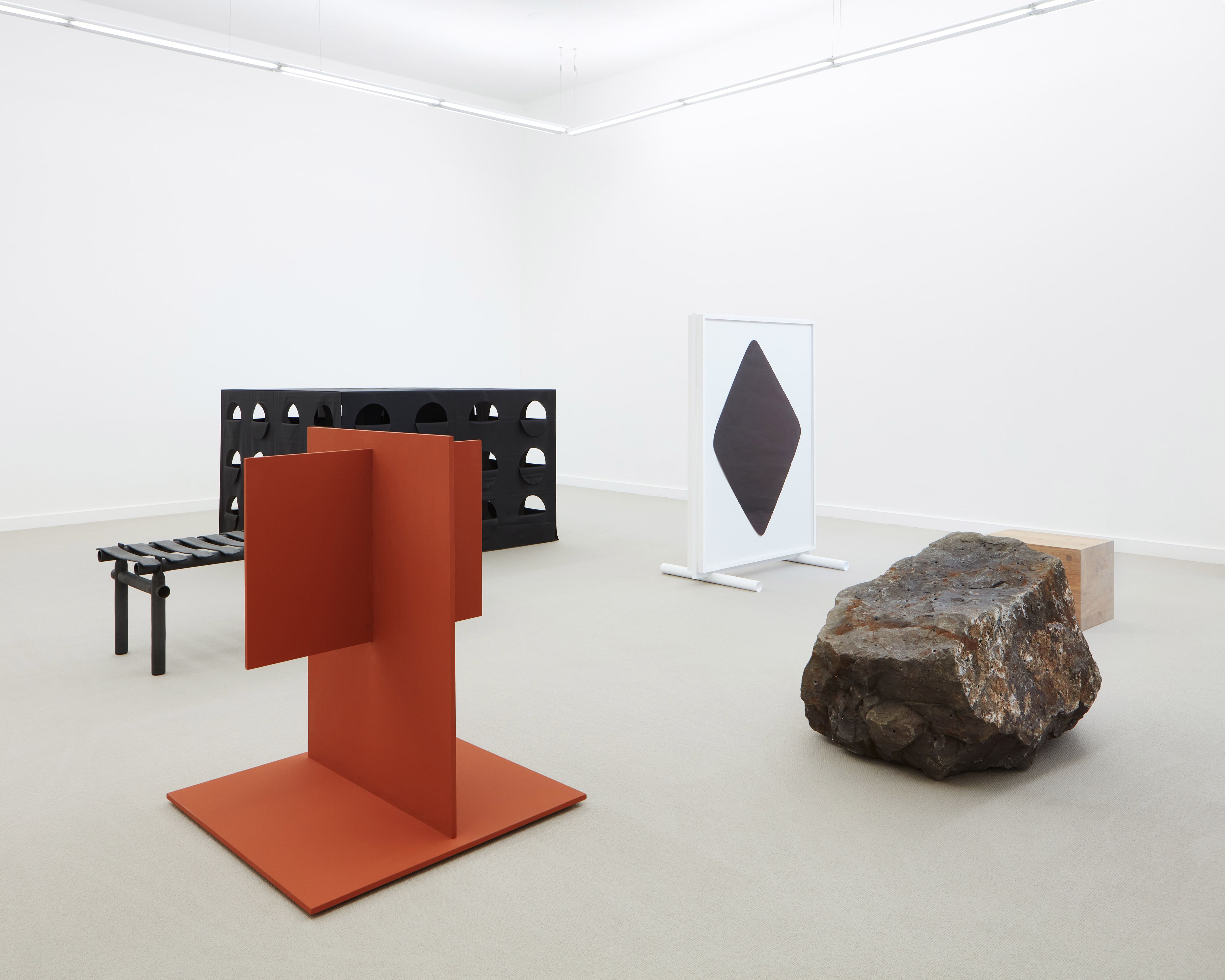
Installation view of Jonathan Muecke’s eponymous 2021 solo show at Volume Gallery in Chicago. Photo courtesy of the artist and Volume Gallery.
What makes something a “test” for you?
I think a test is a way of giving credit to the object itself and not so much about me being the author of it. I think there is something inherent to the work I do or the things and ideas I’m interested in that gives reverence to the object itself. There is something there to reckon with.
What is your relationship with the built environment?
I like that you’re direct about your questions. Normally people ask questions that are very specific to the work and much less about me.
[Laughs.] Yes, but you make the work.
I always intend to have a way of getting out of the work — it’s something to push for. As for the “built environment,” I don't know if I’ve ever thought about that term.
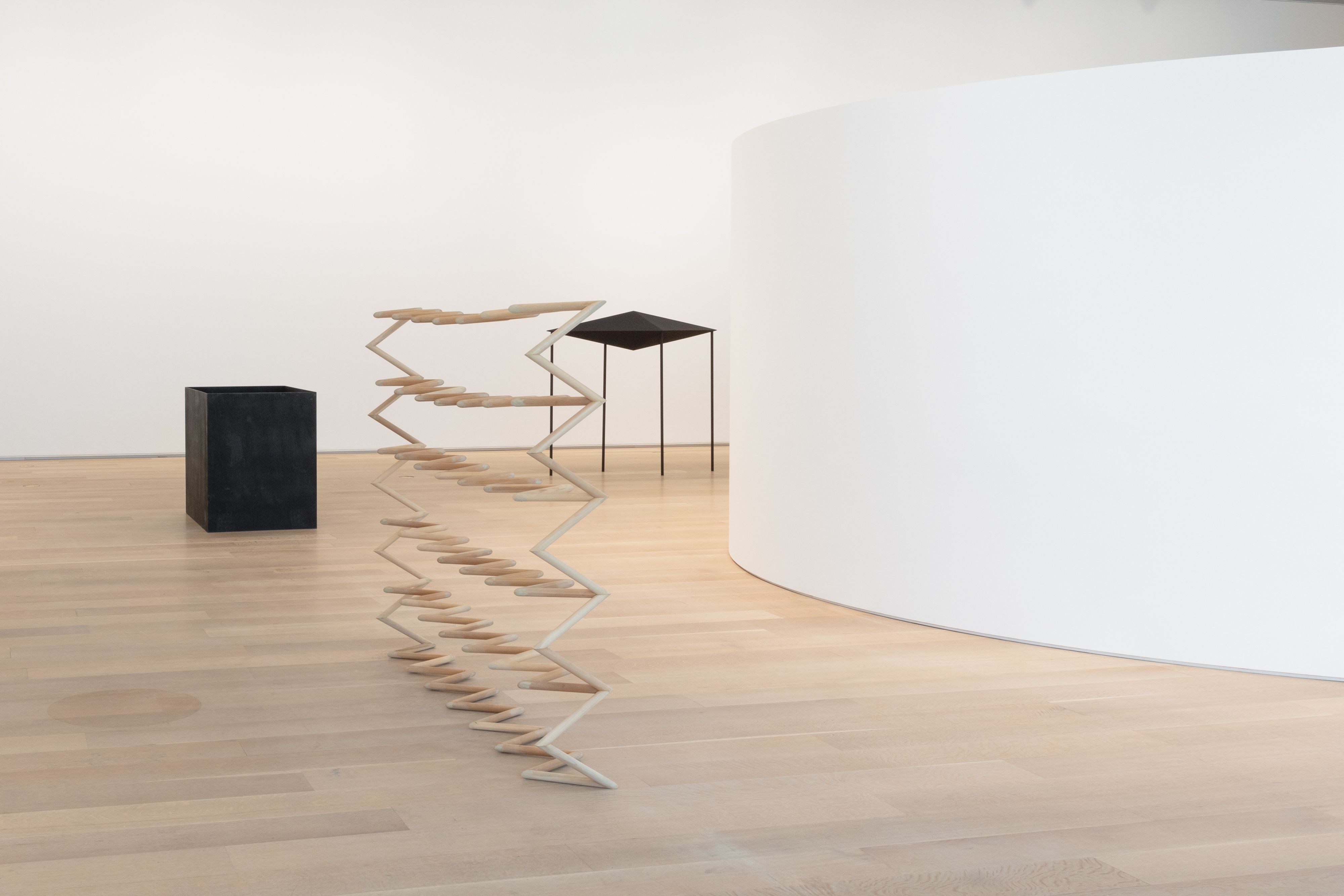
Install view of Jonathan Muecke: Objects in Sculpture at the Art Institute of Chicago, which is on view until October 10, 2022. Courtesy The Art Institute of Chicago, 2022.
Do you think about cities at all?
I don’t think about cities: the scale of my thought is smaller than the city. My scale of thought is about objects and about private cities. It would be really hard for me to be working on something greater than a personal residence.
Do you see your work as individual objects or as a web of interrelated things?
It’s actually much more specific. It may sound strange, but I always think I’m making the same thing over and over again. But it doesn’t look the same. A lot of it is not the same. It has much to do with the process and the acknowledgment of the material, the color, and the principles that all objects have, the things they will always have and will always operate by. Though the outcome is a little different, and the ingredients that make up the object are always a little different, in a way it’s the same. And there are people who always make the same kind of thing. I think there is that measure to what I do even though you wouldn’t immediately recognize it.
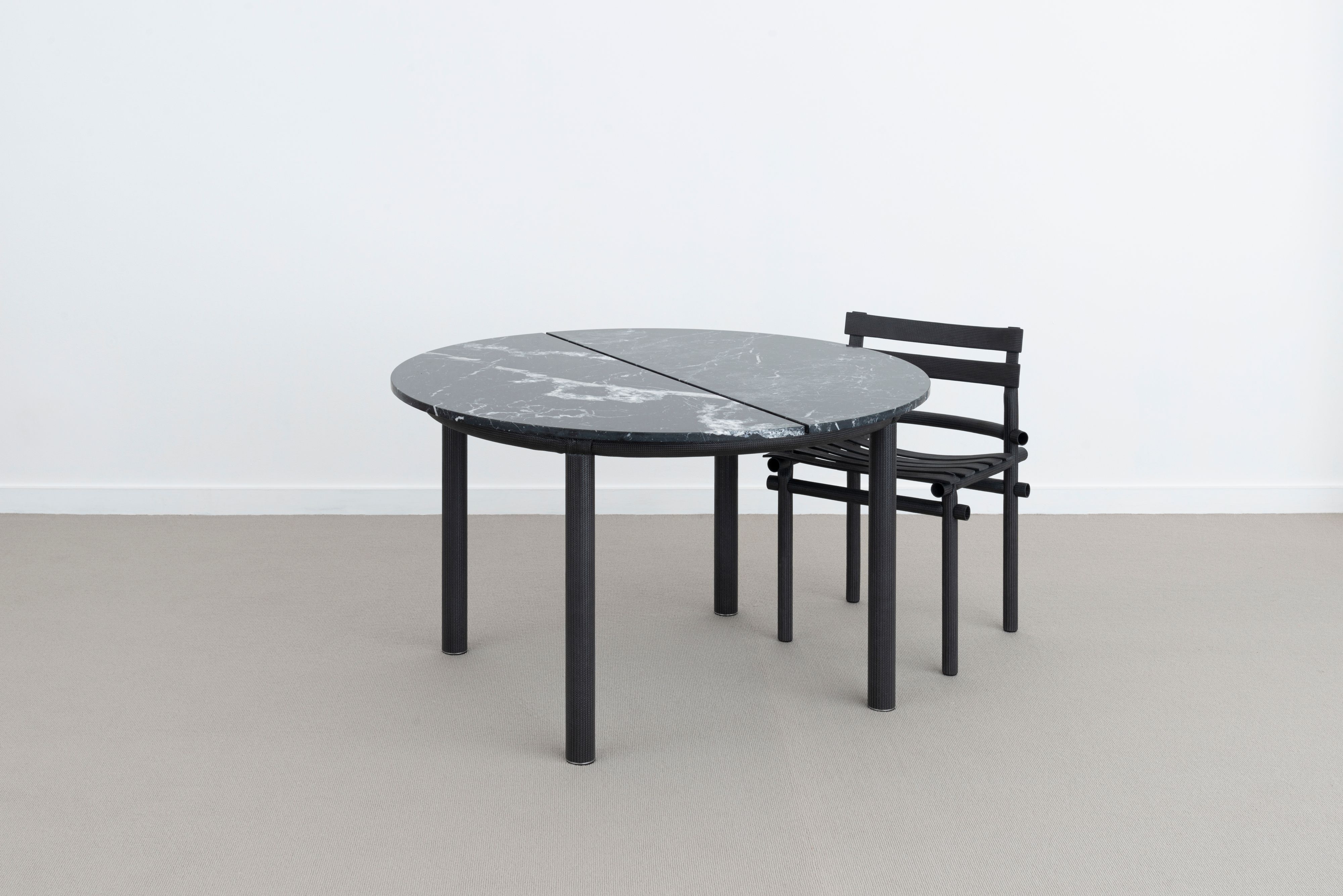
Jonathan Muecke MCT (Marble Carbon Table), 2021. Made from marble and carbon fiber. Photo courtesy of the artist and Volume Gallery.
Do you think of yourself as a storyteller?
[Laughs.] Of a story that doesn’t have any words. I guess the story for me is the context. I’m reluctant to use the term “storyteller.” I don’t really agree with the idea that objects have a narrative, I think that narrative can be flexible. When I hear a lot about products I hear about the narrative, and I never thought that was a good idea for objects. I don’t think objects are fixed in that way — I think objects should be given more credit. My reference point here is that someone told me that architects never talk about their buildings in the same way twice. I don’t know if that’s due to the complexity or the scale of them, but there is a nice flexibility there: things can be themselves without being described in a constant narrative space.
Do you classify yourself as an artist?
Yes, I find that it’s the most helpful way to describe myself. If I say I’m a designer, people think they can hire me. If I say I’m an architect, they think I can build things for them. A lot of what I do is because of personal interest.